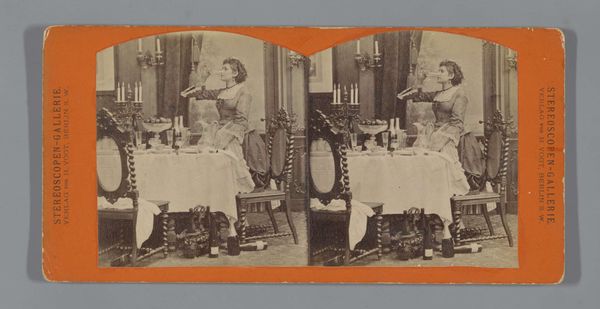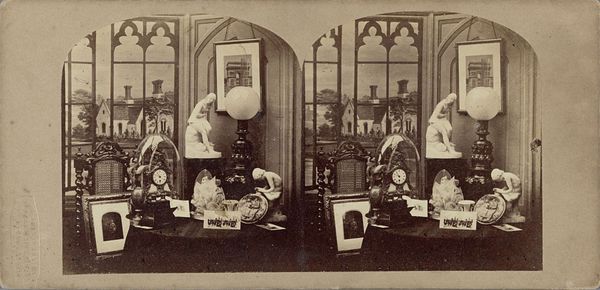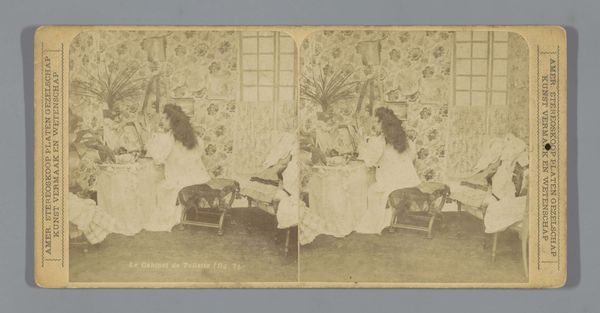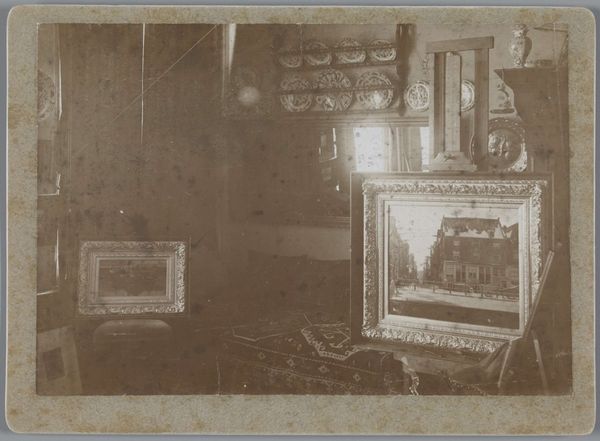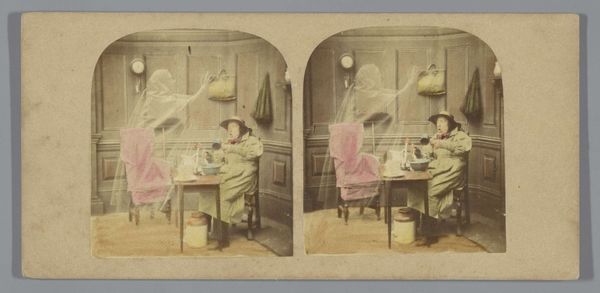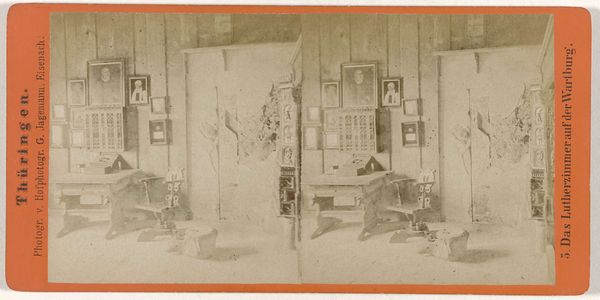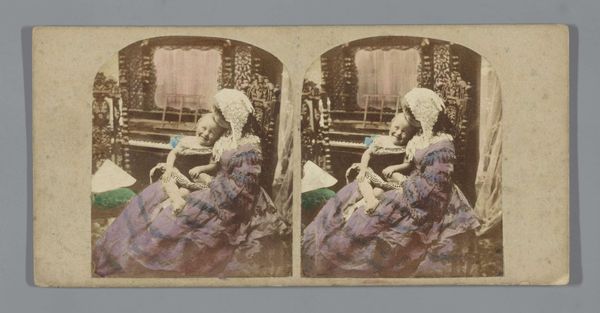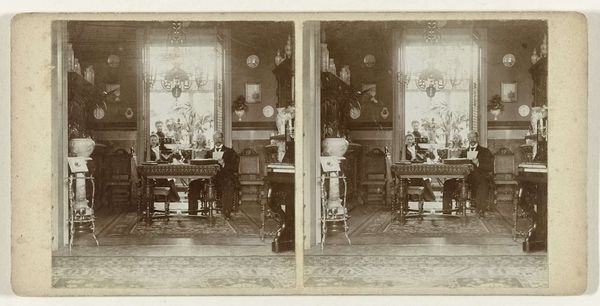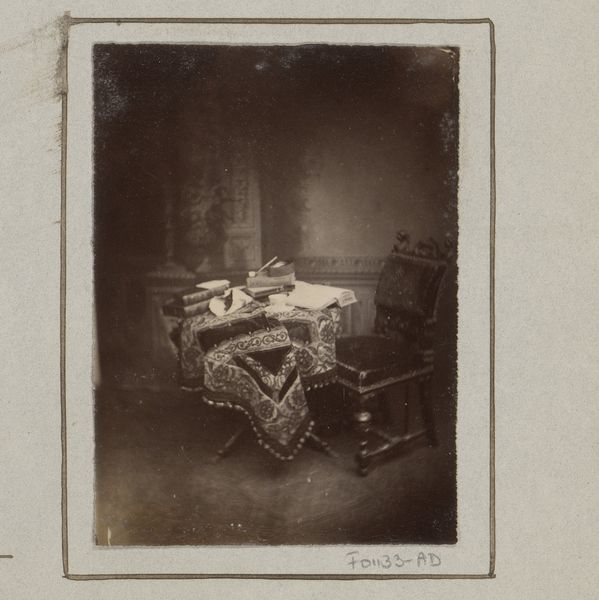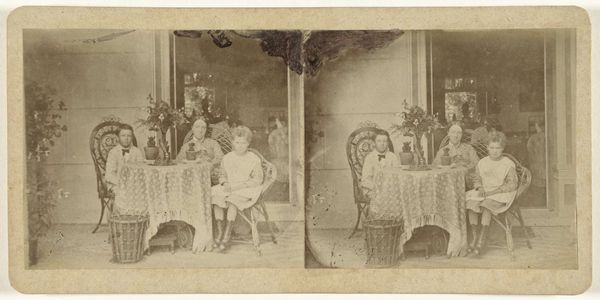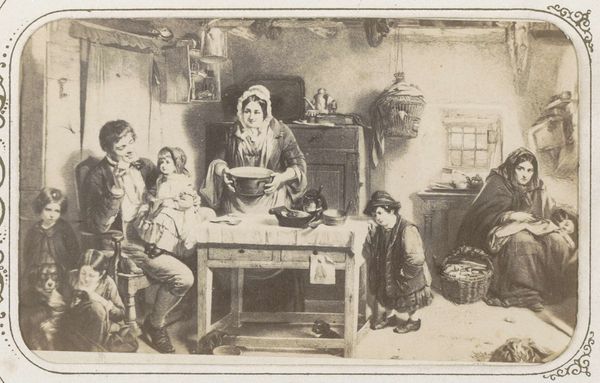
Portret van een jonge vrouw op een stoel in de huiskamer c. 1895 - 1903
0:00
0:00
photography
#
portrait
#
photography
#
genre-painting
#
realism
Dimensions: height 80 mm, width 160 mm
Copyright: Rijks Museum: Open Domain
Curator: Here we have "Portret van een jonge vrouw op een stoel in de huiskamer" by Geldolph Adriaan Kessler, dating from somewhere around 1895 to 1903. It’s a photographic portrait housed here at the Rijksmuseum. Editor: My first thought is how weighed-down this space feels! So much pattern and detail packed into this modest room. Curator: Absolutely. Notice all of those decorative elements, from the wallpaper and the arrangements hanging on it, to the potted plants and patterned textiles—these signal a particular cultural obsession with domesticity. The young woman's dress also shares a lot with the patterns behind her, merging into the decoration itself. Editor: The over-abundance is really telling. Looking closely, those shelves, what are they even made of? The artistry that must have gone into the handmade details... Curator: Precisely. She is embedded in her social world. I wonder what kind of narrative we might infer? The symbolism surrounding this type of enclosed interior and pose might suggest isolation, or contentment—the objects on display suggesting social ties. Editor: I’m thinking about the sheer labor behind the textiles alone. How many hours to create, to launder, to maintain it all! Look how much furniture is squeezed in here. One small room as an aspirational inventory of status. Curator: You bring out something crucial—these photographs reflect a social striving. Consider her face—what might this controlled portrait mean for her social mobility, for how she hoped to be seen? The image itself becomes an artifact in the production of identity. Editor: True, this image is clearly communicating more than a physical likeness. Seeing all of that decorative work surrounding her makes you really see the layers and layers of crafted environment pressing around one body. It prompts new questions on class and labour, as well as status anxiety of a time. Curator: Indeed, seeing her framed like this in her home tells its own history, making visible that intersection between place and psychology. Editor: Thanks to our different takes, I'm certainly seeing details in the making-of, and context now!
Comments
No comments
Be the first to comment and join the conversation on the ultimate creative platform.

